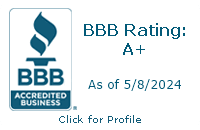Do you believe books on leadership have to be heavy, in both tone and weight? If so, these three books should convince you otherwise.

Every June for the last 14 years, I've suggested several business-related books I believe are both fun to read and relevant to common business challenges. The three books in my fifteenth book review meet both criteria and deal with various aspects of leadership.
Indeed, I believe these three books complement each other nicely:
- Growing Influence discusses and illustrates three types of leadership – Character, Expert, and Positional.
- Atomic Habits provides a framework to turn leadership qualities – especially those for Character and Expert leadership – into lifelong habits.
- It Doesn't Have To Be Crazy At Work shares the journey of two co-owners in leveraging their Character and Expert leadership qualities to build a successful company, and then used Positional leadership to transform it into a "calm company."
While I've written a number of articles in the areas of leadership and personal accountability – a key factor in successful self-leadership – and have featured a number of leadership-related books in my book reviews, these three books either address topics I've not previously covered or present ideas in a new or different manner.
Growing Influence: A Story of How to Lead with Character, Expertise, and Impact, by Ron Price and Stacy Ennis
This book presents its leadership content in a "business fable" format, where a story is told while weaving lessons into the narrative. The story opens with Emily – a thirtysomething manager at fictional technology company Enertec, wife of working husband Jason, and mother of young son Henry – annoyed by the failure of her male co-workers to cleanup and neaten the conference room following a meeting, and then learning she'd been passed up for a promotion for the third time!
Shortly after that bad day, Emily makes her first visit to a popular coffee shop in Boise, where she happens upon a retired CEO named David. David correctly senses Emily has several things on her mind and asks her about these. Over several weeks, she shares her story and frustrations over coffee with David, who shares with Emily leadership lessons he learned over his working years.
David introduces Emily to three types of leadership and lists qualities associated with each:

(page 58)
Over the rest of the book, David fleshes out these three types of leadership – Positional (where someone falls on an organization chart), Expert (what someone knows or can do), and Character (who someone is) – describing the "Influence" each can have and the definitions of "Integrity" applicable to each type.
While this book was an enjoyable read and had good content, it lacked one feature of typical business fables – an appendix summarizing the methods and techniques presented. I did check the book's web site to see whether such a summary was available. What I saw was a note stating "Chapter Notes Coming Soon! Check Back this Fall for a Chapter Guide."
How I Plan to Use This Book – The authors presented a lot of good content about leadership qualities and behaviors I'd not previously considered, so I intend to go back and find the best content, then summarize it to use in assessing my own areas for growth.
Atomic Habits: An Easy & Proven Way to Build Good Habits & Break Bad Ones, by James Clear
This book had me from the introduction, where the author recounts a terrible sports injury in high school and how this helped set him on the path of "Atomic Habits."
Here's how the author defines "atomic habits:"
Focusing on the overall system, rather than a single goal, is one of the core themes of this book. It is also one of the deeper meanings behind the word atomic. By now, you've probably realized that an atomic habit refers to a tiny change, a marginal gain, a 1 percent improvement. But atomic habits are not just any old habits, however small. They are little habits that are part of a larger system. Just as atoms are the building blocks of molecules, atomic habits are the building blocks of remarkable results. ... This is the meaning of the phrase atomic habits – a regular practice or routine that is not only small and easy to do, but also the source of incredible power; a component of the system of compound growth. (page 27)
The book describes "The Four Stages Of Habit" and a corresponding "Law" to successfully implement each stage:
| No. | Stage | Law |
| 1 | Cue | Make It Obvious |
| 2 | Craving | Make It Attractive |
| 3 | Response | Make It Easy |
| 4 | Reward | Make It Satisfying |
I found the book to be very well-organized, divided into six main sections, each containing several chapters:
- The Fundamentals – Why Tiny Changes Make a Big Difference
- The 1st Law – Make It Obvious
- The 2nd Law – Make It Attractive
- The 3rd Law – Make It Easy
- The 4th Law – Make It Satisfying
- Advanced Tactics – How to Go from Being Merely Good to Being Truly Great
Here are a FEW of the tidbits I marked as I read "The Fundamentals" section of this book:
- "You should be far more concerned with your current trajectory than with your current results." (page 18)
- "Your outcomes are a lagging measure of your habits." (page 18)
- "Eventually, I began to realize that my results had very little to do with the goals I set and nearly everything to do with the systems I followed. ... Goals are about the results you want to achieve. Systems are about the processes that lead to those results." (page 23)
- "You do not rise to the level of your goals. You fall to the level of your systems." (page 27)
- "The ultimate form of intrinsic motivation is when a habit becomes part of your identity. It's one thing to say I'm the type of person who wants this. It's something very different to say I'm the type of person who is this." (page 33)
- "True behavior change is identity change. ... The biggest barrier to positive change at any level – individual, team, society – is identity conflict." (pages 34 and 35)
- "This is the feedback loop behind all human behavior: try, fail, learn, try differently. With practice, the useless movements fade away and the useful actions get reinforced. That's a habit forming." (page 45)
- "Habits are mental shortcuts learned from experience. ... Habit formation is incredibly useful because the conscious mind is the bottleneck of the brain. ... Habits reduce cognitive load and free up mental capacity, so you can allocate your attention to other tasks." (page 46)
And there are MANY other nuggets I highlighted in the book's five other sections!
I like this book because it draws together – and clearly explains – a LOT of the reading I've done and lessons I've learned over my career, and illustrates these with relevant examples. In addition, the book's web site makes a number of resources available for anyone.
How I Plan to Use This Book – I intend to use the author's framework to assess some habits I'd like to change, and then use the various tactics he covers – including Habit Stacking, Temptation Bundling, The Two-Minute Rule, and Habit Tracking – to develop the systems I need to implement these changes.
It Doesn't Have To Be Crazy At Work, by Jason Fried and David Heinemeier Hansson
The authors are the same folks who wrote Rework, a book I reviewed nearly a decade ago!
In this book, the authors – co-founders of the online project management application Basecamp – describe their journey in making their company a "calm company." Here's their explanation of this concept:
For nearly 20 years, we've been working at making Basecamp a calm company. One that isn't fueled by stress, or ASAP, or rushing, or late nights, or all-nighter crunches, or impossible promises, or high turnover, or consistently missed deadlines, or projects that never seem to end.
No growth-at-all-costs. No false busyness. No ego-driven goals. No keeping up with the Joneses Corporation. No hair on fire. And yet we've been profitable every year we've been in business. (page 5)
Like Rework, this book is organized into sections, with short chapters fleshing out the concept underlying each section. These sections are:
- First
- Curb Your Ambition
- Defend Your Time
- Feed Your Culture
- Dissect Your Process
- Mind Your Business
- Last
Here are a few chapters and a key point from each I've marked for further reflection:
- Bury the hustle – "[Hustle is] also just bad advice. You're not very likely to find that key insight or breakthrough idea north of the 14th hour in the day. Creativity, progress, and impact do not yield to brute force." (page 18)
- Our goal: No goals – "We get how it works – we just don't care. We don't mind leaving some money on the table and we don't need to squeeze every drop out of the lemon. Those final drops usually taste sour, anyway." (page 24)
- 8's enough, 40's plenty – "It takes about 8 hours to fly direct from Chicago to London. ... Every day your workday is like flying from Chicago to London. By why does the flight feel longer than your time in the office? It's because the flight is uninterrupted continuous time. It feels long because it is long!" (page 41)
- The quality of an hour – "A fractured hour isn't really an hour – it's a mess of minutes." (page 46)
- Work doesn't happen at work – "Modern-day offices have become interruption factories. Merely walking in the door makes you a target for anyone else's conversation, question, or irritation. When you're on the inside, you're a resource who can be polled, interrogated, or pulled into a meeting." (pages 54 and 55)
- Calendar Tetris – "The shared work calendar is one of the most destructive inventions of modern times. ... Getting on someone's schedule at Basecamp is a tedious, direct negotiation, not an easy, automated convenience. You have to make your case. You can't just reach into someone's calendar, find an open slot, and plant your flag. That's because no one can see anyone else's calendar at Basecamp." (page 62)
- Hire the work, not the resume' – " ... at Basecamp, we put a real project in front of the candidates so that they can show us what they can do. For example, when we're choosing a new designer, we hire each of the finalists for a week, pay them $1,500 for that time, and ask them to do a sample project for us. Then we have something to evaluate that's current, real, and completely theirs." (page 102)
- Compromise on quality – "You just can't bring your A game to every situation. Knowing when to embrace Good Enough is what gives your the opportunity to be truly excellent when you need to be." (page 155)
- Have less to do – "The only way to get more done is to have less to do. Saying no is the only way to claw back time. ... It's not time management, it's obligation elimination. Everything else is snake oil." (page 172)
The authors let their voices come through in this book, and write as though they are talking directly with the reader. Don't let the casual conversational tone of this book fool you – the content is excellent and very thought-provoking.
How I Plan to Use This Book – While Basecamp and my business occupy completely different industries, the authors' comments on viewing your company as a "product" and making this product the best it can be come at a good time for me, as I am consciously reviewing my business for improvement and streamlining opportunities. Many of their counter-intuitive insights provide me a different viewpoint I would not otherwise have had.
Final Takeaway
I found all three books to be easy reads, with engaging writing and excellent content. Best of all, they are great for my favorite time of the year to read – summer! Summer is a time when I can pick up a book, read it for a while, mark my place, cool off in the pool, sun a while, ponder what I'd just read, and then pick up reading where I'd left off. I hope you enjoy these three books as much as I did.
Sincerely,

Todd L. Herman
Fun Recommendation – During drive times to visit family, my wife and I enjoy listening to audio books. This past year, we've been listening to a book series called Expeditionary Force, by Craig Alanson.
The premise of this sci-fi series – in the not-too-distant future, Earth has been attacked by two alien species, the Ruhar and the Kristang. The latter group appears to be friendly to humans, yet as Army Corporal Joe Bishop eventually learns, this is really a cover for more nefarious plans. Joe is recruited to serve aboard a Kristang warship on a mission taking him many light years from Earth. During that mission, Joe discovers an ancient alien artificial intelligence shaped like a beer can, whom he names Skippy. Skippy and Joe are both smart alecks, who become best friends while leading a group of humans aboard a highjacked starship on daring missions to protect Earth.
While the Expeditionary Force series is available in print (available only on Amazon), we were hooked on the audiobook version (from Audible, owned by Amazon) from the start because of the AMAZING vocal talents of award-winning narrator R.C. Bray! Highly recommended!









